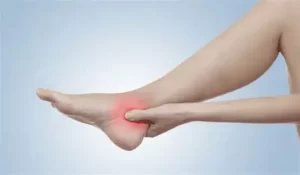A Runner’s Guide to Posterior Tibialis Tendinitis
As a runner, you know that every stride counts, but what happens when a nagging pain in your lower leg sidelines you? Pain and tenderness along the inside of your shin and ankle can be a sign of posterior tibialis tendinitis, a common overuse injury in runners.
What Is Posterior Tibialis Tendinitis?
The posterior tibialis muscle is located in your calf and runs along the inside of your shin, attaching to several bones in your foot. Its primary job is to support the arch of your foot and help stabilize your ankle when you push off the ground. When this muscle and its tendon become overworked, it can lead to inflammation and pain, known as tendinitis. This is often caused by a rapid increase in training volume, poor footwear, or running on uneven surfaces.
In order to recover from a tendinopathy, gradual and progressive loading with exercises is required with the guidance of a physical therapist.
A General Timeline for Tendon Recovery
It’s important to be patient during the recovery process. While everyone is different, here is a general timeline you can expect:
- First 1-2 Weeks: Focus on pain reduction and manual therapy. Initial strengthening may begin with isometric exercises (holding a position without movement).
- Weeks 3-6: As pain subsides, we will begin progressive strengthening exercises to increase the tendon’s load capacity. Balance and proprioception training become a key part of your routine.
- Weeks 6-12: You should be able to tolerate more advanced exercises and begin a phased return to running, starting with short intervals.
- 3+ Months: You will likely be back to your normal running routine, but it’s important to continue a maintenance program of strengthening and mobility work to prevent future injury.
Balance Exercises for Runners
These exercises can help you regain stability and prepare your body to return to the road:
- Single-Leg Stance: Simply stand on one leg for 30-60 seconds at a time. To increase the challenge, try it with your eyes closed or stand on an uneven surface like a pillow.
- Single-Leg Weight Pass: Stand on your injured leg and hold a light weight. Slowly pass the weight from one hand to the other, or pass it around your body in a figure-eight motion. This challenges your balance while your core and leg muscles work to stabilize you.
- Clock Reach: Imagine a clock on the floor around you. Standing on one leg, slowly reach your other foot out to touch each hour on the clock, returning to the center each time.
By integrating these exercises, you’re not just recovering from an injury—you’re becoming a stronger, more resilient runner. To book your evaluation with a licensed physical therapist please Click Here.

